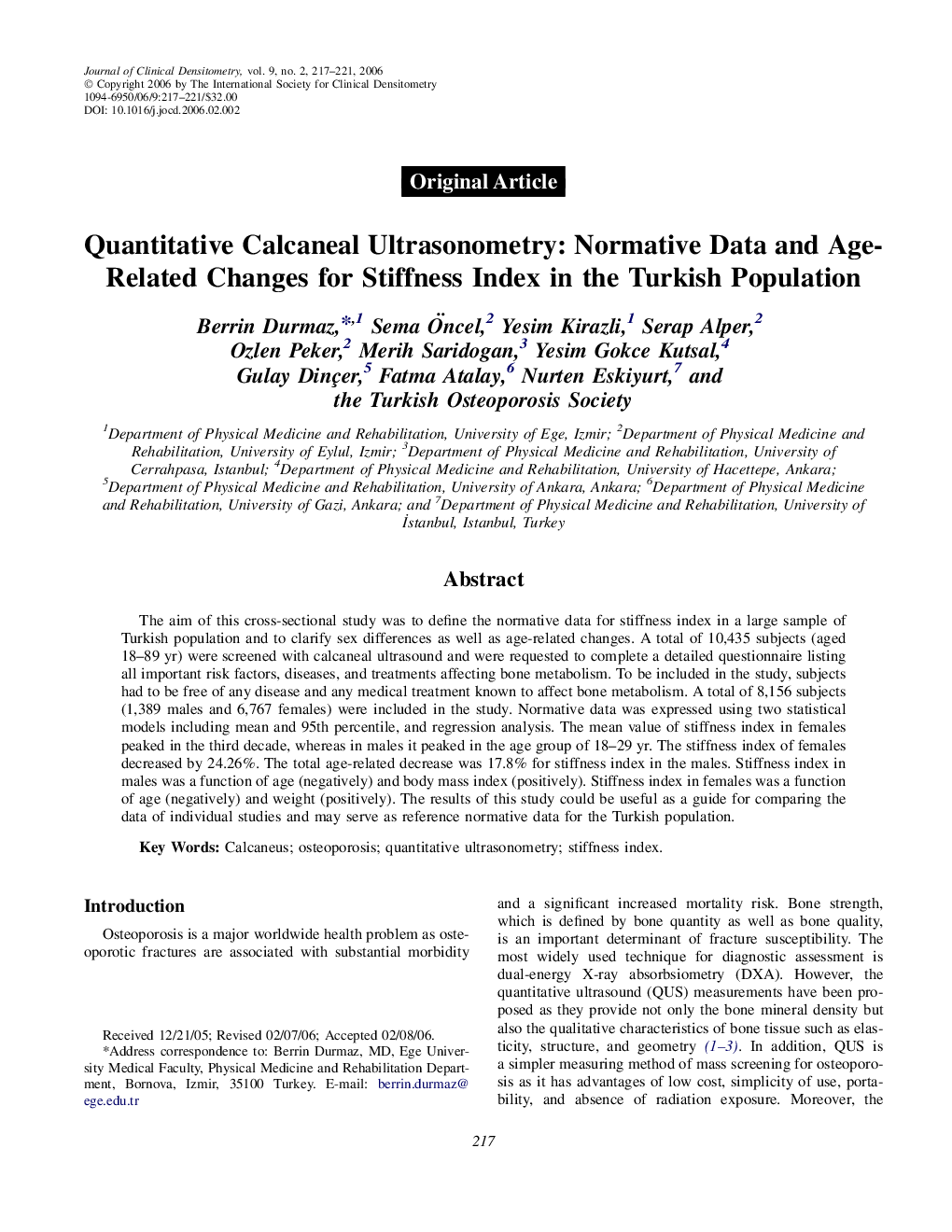| Article ID | Journal | Published Year | Pages | File Type |
|---|---|---|---|---|
| 3271864 | Journal of Clinical Densitometry | 2006 | 5 Pages |
Abstract
The aim of this cross-sectional study was to define the normative data for stiffness index in a large sample of Turkish population and to clarify sex differences as well as age-related changes. A total of 10,435 subjects (aged 18-89 yr) were screened with calcaneal ultrasound and were requested to complete a detailed questionnaire listing all important risk factors, diseases, and treatments affecting bone metabolism. To be included in the study, subjects had to be free of any disease and any medical treatment known to affect bone metabolism. A total of 8,156 subjects (1,389 males and 6,767 females) were included in the study. Normative data was expressed using two statistical models including mean and 95th percentile, and regression analysis. The mean value of stiffness index in females peaked in the third decade, whereas in males it peaked in the age group of 18-29 yr. The stiffness index of females decreased by 24.26%. The total age-related decrease was 17.8% for stiffness index in the males. Stiffness index in males was a function of age (negatively) and body mass index (positively). Stiffness index in females was a function of age (negatively) and weight (positively). The results of this study could be useful as a guide for comparing the data of individual studies and may serve as reference normative data for the Turkish population.
Related Topics
Health Sciences
Medicine and Dentistry
Endocrinology, Diabetes and Metabolism
Authors
Berrin Durmaz, Sema Ãncel, Yesim Kirazli, Serap Alper, Ozlen Peker, Merih Saridogan, Yesim Gokce Kutsal, Gulay Dinçer, Fatma Atalay, Nurten Eskiyurt, the Turkish Osteoporosis Society the Turkish Osteoporosis Society,
